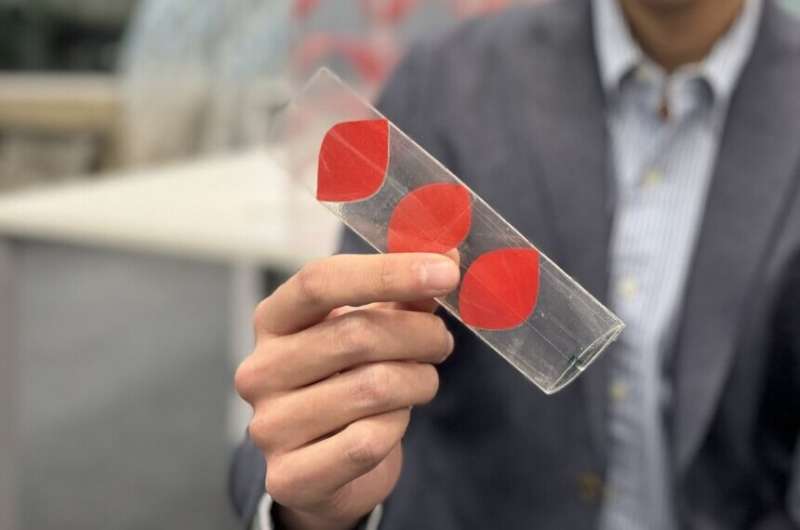
Engineers at RMIT University have designed an innovative tubular structural system that can be packed flat for easier transport and pop up into strong building materials. This breakthrough is made possible by a self-locking system inspired by curved-crease origami—a technique that uses curved crease lines in paper folding.
Lead researchers Dr. Jeff (Ting-Uei) Lee and Distinguished Professor Mike (Yi Min) Xie, said that bamboo, which has internal structures providing natural reinforcement, inspired the tube design.
“This self-locking system is the result of an intelligent geometric design,” said Lee, from RMIT’s School of Engineering. “Our invention is suitable for large-scale use—a panel, weighing just 1.3 kg, made from multiple tubes can easily support a 75 kg person.”
Flat-pack tubes are already widely used in engineering and scientific applications, such as in biomedical devices, aerospace structures, robotics and civil construction, including pop-up buildings as part of disaster recovery efforts.
The new system makes these tubes quicker and easier to assemble, with the capability to automatically transform into a strong, self-locked state.
The research is published in Proceedings of the National Academy of Sciences. Other contributors to this work include Drs Hongjia Lu, Jiaming Ma and Ngoc San Ha from RMIT’s School of Engineering and Associate Professor Joseph Gattas from the University of Queensland.
“Our research not only opens up new possibilities for innovative and multifunctional structural designs, but it can also significantly improve existing deployable systems,” said Xie, from the School of Engineering.
“When NASA deploys solar arrays, for example, the booms used are tubes that were packed flat before being unfurled in space,” Lee said. “These tubes are hollow, though, so they could potentially deform under certain forces in space. With our new design, these booms could be a stronger structure.”
Xie explained that their smart algorithm enabled control over how the structure behaved under forces by changing the tube orientations.
“With our origami-inspired innovation, flat-pack tubes are not only easy to transport, but they also become strong enough to withstand external forces when in use,” Xie said. “The tube is also self-locking, meaning its strong shape is securely locked in place without the need for extra mechanisms or human intervention.”
Next steps
The team will continue to improve the design and explore new possibilities for its development.
“We aim to extend the self-locking feature to different tube shapes and test how the tubes perform under various forces, such as bending and twisting,” Lee said. “We are also exploring new materials and manufacturing methods to create smaller, more precise tubes.”
The team is developing tubes that can deploy themselves for a range of applications without needing much manual effort.
“We plan to improve our smart algorithm to make the tubes even more adaptable and efficient for different real-world situations,” Xie said.
More information:
Xie, Yi Min et al, Self-locking and stiffening deployable tubular structures, Proceedings of the National Academy of Sciences (2024). DOI: 10.1073/pnas.2409062121. doi.org/10.1073/pnas.2409062121
Citation:
New origami-inspired system turns flat-pack tubes into strong building materials (2024, September 23)
retrieved 26 September 2024
from https://techxplore.com/news/2024-09-origami-flat-tubes-strong-materials.html
This document is subject to copyright. Apart from any fair dealing for the purpose of private study or research, no
part may be reproduced without the written permission. The content is provided for information purposes only.


